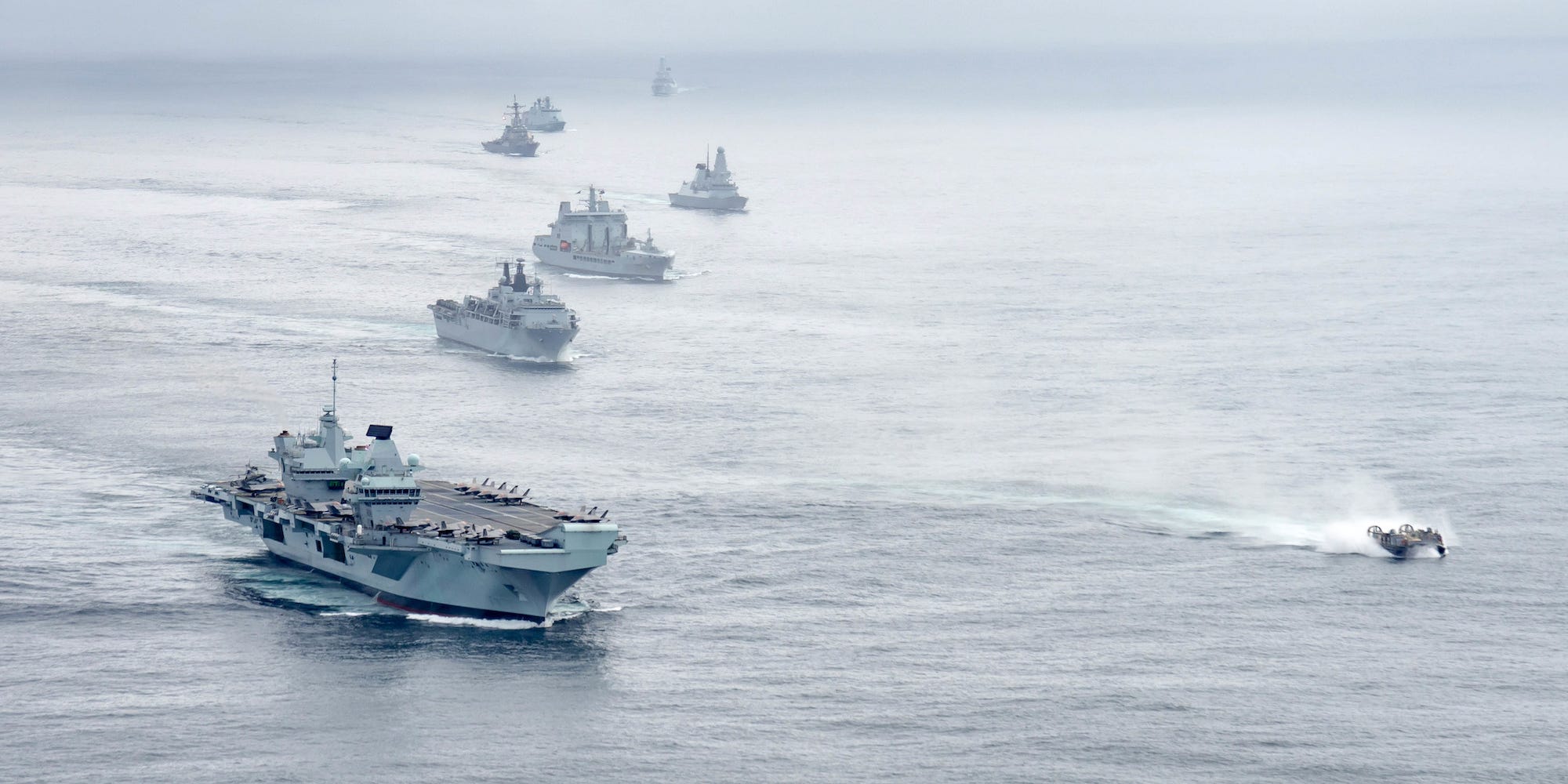
US Navy/Lt. Anton Ekman
- NATO ships, subs, and aircraft are training in the Atlantic in exercise "Steadfast Defender."
- The goal is to ensure the alliance can move reinforcements to Europe.
- It's for "a much more subtle" fight that requires more than just moving ships across an ocean.
- See more stories on Insider's business page.
More than a year after the US Navy practiced leading a convoy across the Atlantic for the first time since the Cold War, its ships are working with other NATO navies to practice keeping those sea lines of communication open.
The maritime live exercise being led by Virginia-based Joint Force Command Norfolk is the first of three parts of exercise Steadfast Defender, NATO's flagship exercise for 2021, and is focused on "rapid reinforcement" of NATO members in Europe by forces from North America.
The February 2020 convoy exercise saw guided-missile cruiser USS Vella Gulf escort three merchant ships to Europe to "simulate an opposed transit" for the first time since 1986. The ships carried troops and equipment to the US-led Defender Europe exercise, which was cut short by the coronavirus pandemic.
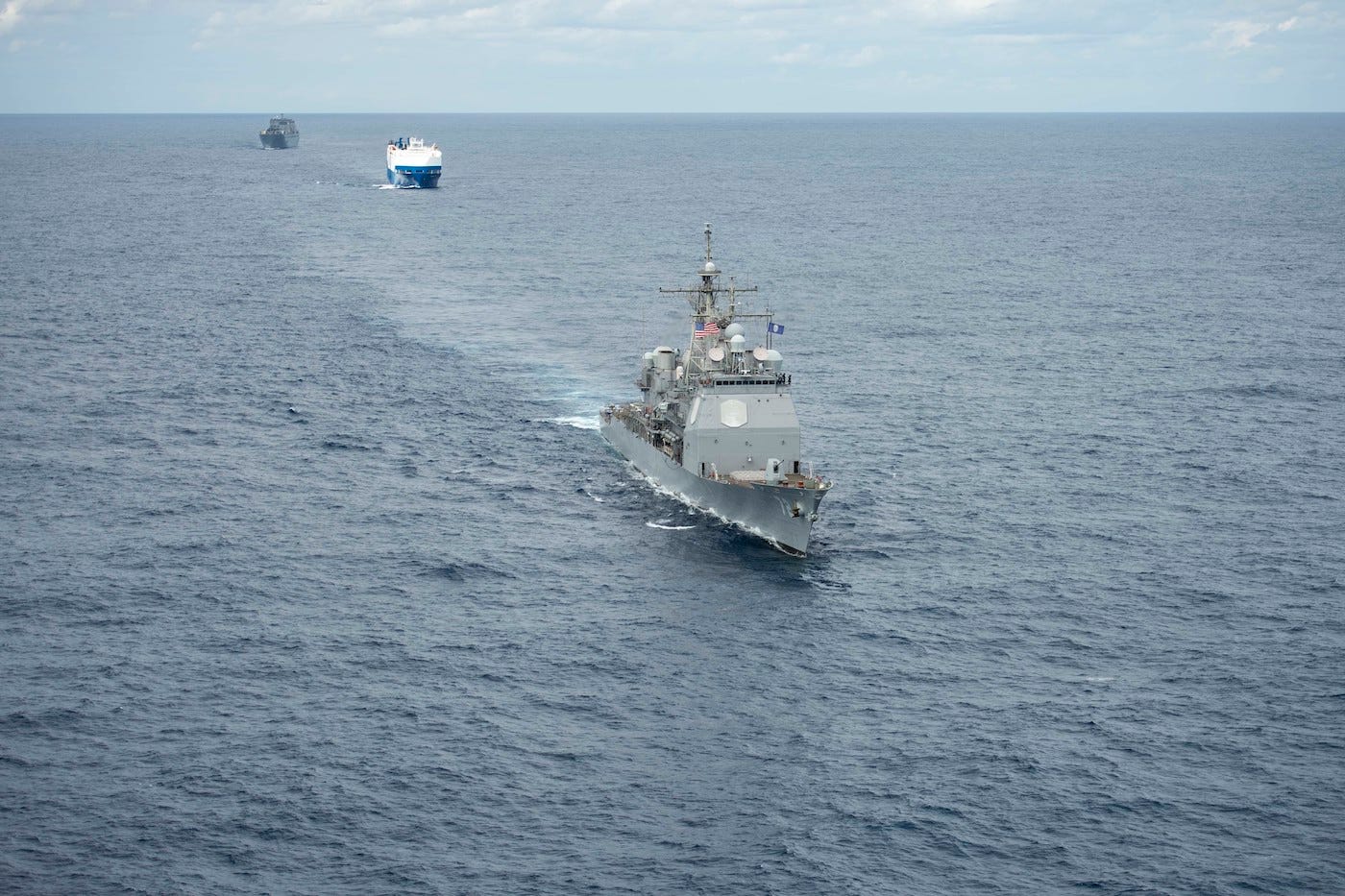
US Navy/MCS 3rd Class Andrew Waters
While Defender Europe didn't start until after that convoy arrived, this year's maritime live exercise "is about deploying and transporting goods and personnel to get to the various points of debarkation" in Europe, Vice Adm. Andrew Lewis, who leads both 2nd Fleet and JFC Norfolk, said at a press conference on Thursday.
During the live exercise, NATO forces will practice "the tactical war-fighting skills that we have to have in a contested environment, so where we need to assure the sea lines of communication across the Atlantic to maintain what we would call sea control," added Lewis, who is overall commander of the exercise.
Times when that sea control is contested "usually coincide at chokepoints, in the maritime straits, restricted maneuvering areas, or when you are approaching where you're going to offload people and stuff," Lewis told reporters, adding that "rapid" in "rapid reinforcement" is "about getting there, being able to assure that [sea control], because this precious cargo or information needs to be protected at all costs."
'A much more subtle fight' to protect fiber optic cables and much more
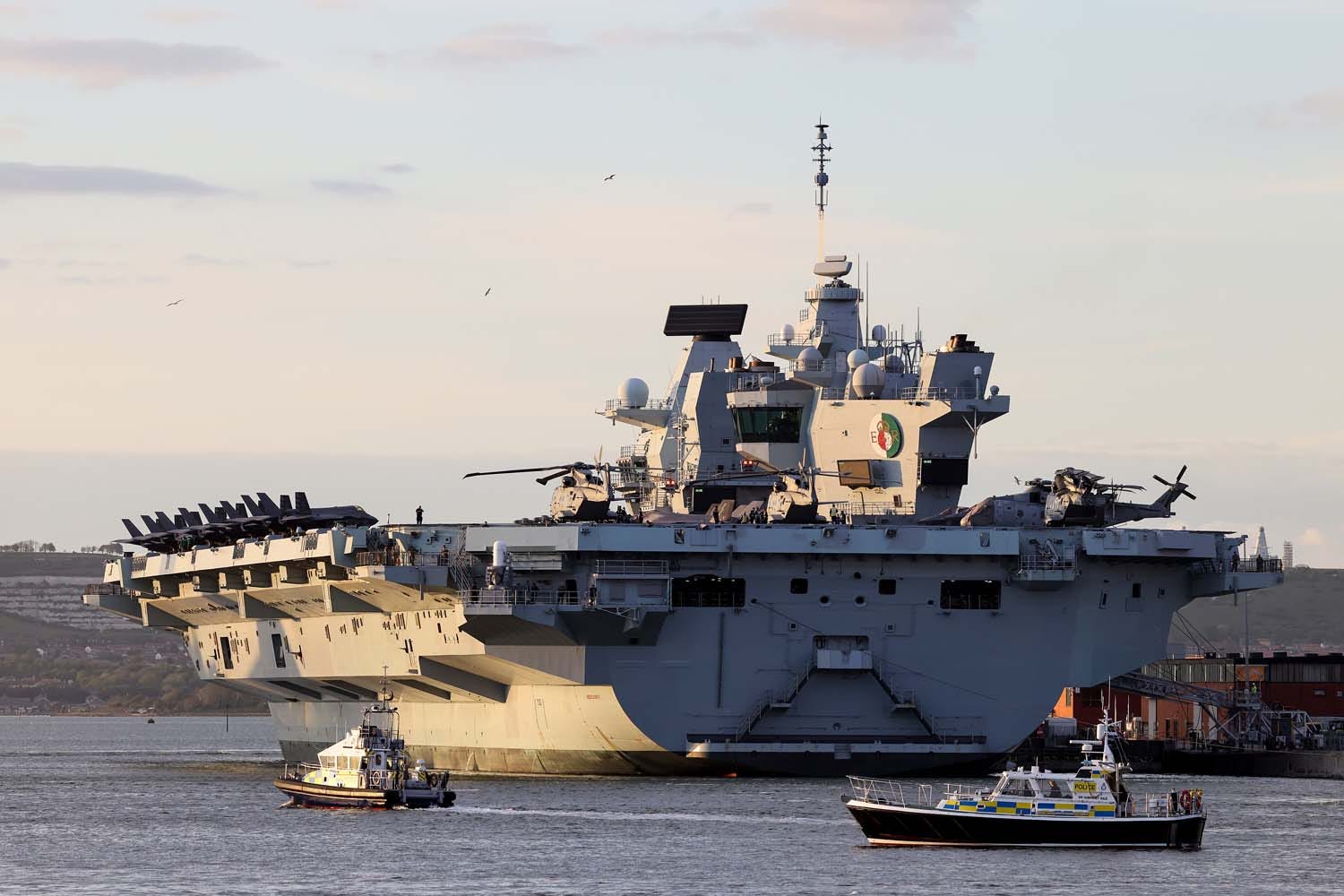
Royal Navy
Last year's merchant escort exercise was a kind of "part-task training" and focused on "the single domain of moving the troops and equipment," Lewis said Thursday.
"Now we're looking at it from a joint all-domain approach," Lewis told Insider during the conference, referring to operations across the air, land, maritime, space, and cyberspace domains.
"We tend to always go back to convoy operations, World War II and so on and so forth, but really, this is a much more subtle fight in that it is literally from seabed to outer space," Lewis said.
NATO navies have focused more on the Atlantic in recent years amid heightened tensions with Russia, which has improved and expanded its navy, especially its submarine force, over the past two decades.
While still smaller than its Soviet predecessor, the Russian sub fleet now boasts missiles capable of hitting important infrastructure, like ports, in Europe and the US. NATO officials also worry about what those submarines could do to undersea cables that relay information between the continents.
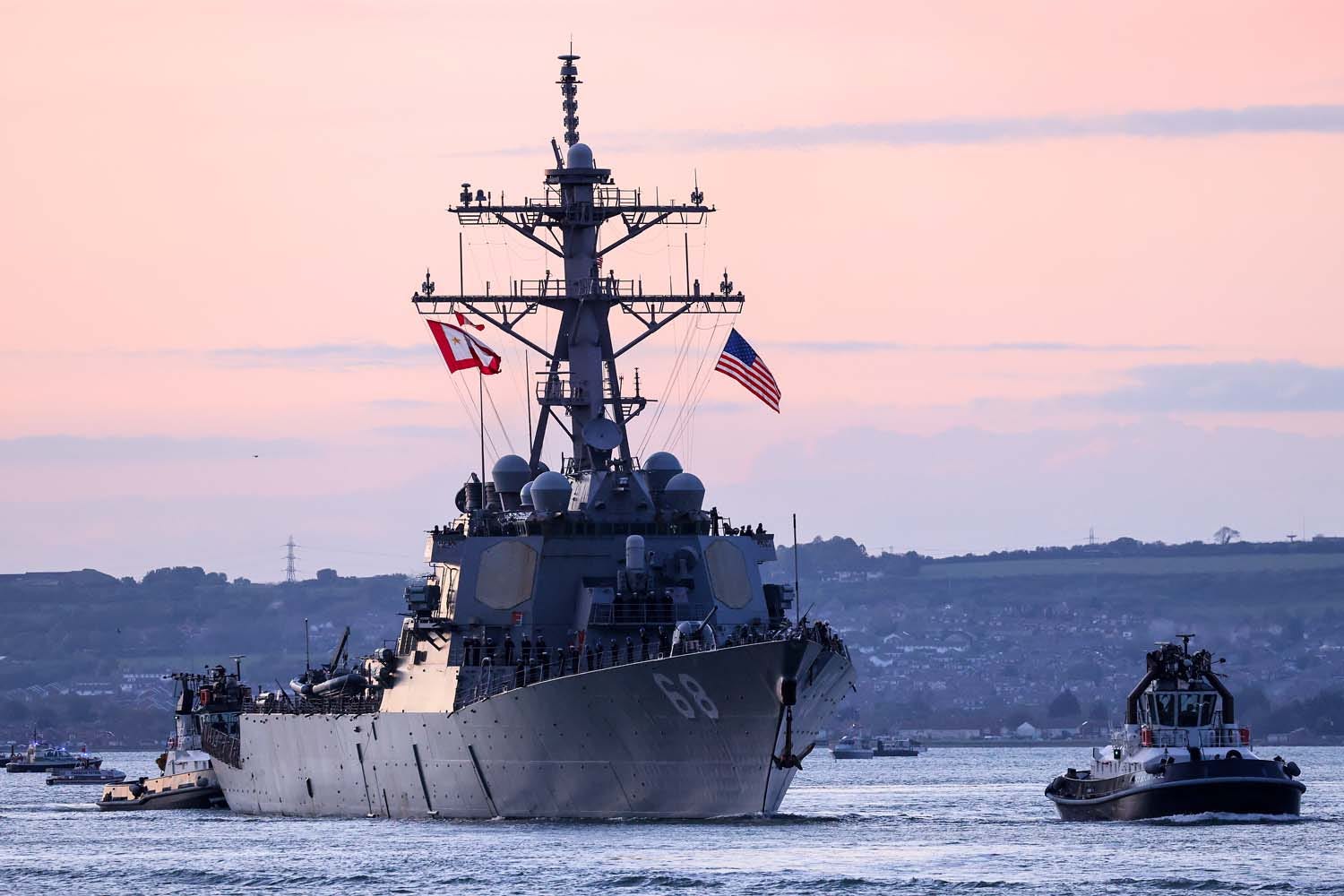
Royal Navy
"Well over 95% of communication on the internet flows through a fiber optic [cable] on the ocean floor, and that is potentially at risk, either inadvertently or purposefully, by adversaries doing bad stuff," Lewis said Thursday.
As "a joint multi-domain command," JFC Norfolk's task "is to create the conditions across all domains that enable the strategic lines of communication to flow," British Royal Navy Rear Adm. Andrew Betton, deputy commander of JFC Norfolk and of the exercise, said Thursday.
A World War II-style convoy may be part of that, Betton added, "but it's much more ... about creating the conditions in which it is safe for reinforcement [and] sustainment activity to continue, whether that be by air or surface or indeed the seabed infrastructure that connects our internet."
Tensions in Europe give this exercise added urgency, reflecting a return to a "deterrence mindset," Lewis said.
"Victory in the security environment that we're in now is not having to fire a shot. It's to deter and maintain the peace," Lewis added. "We can do that, but it's a change in the way we operate."
5,000 service members from 11 NATO countries on 20 ships, including the new British aircraft carrier HMS Queen Elizabeth
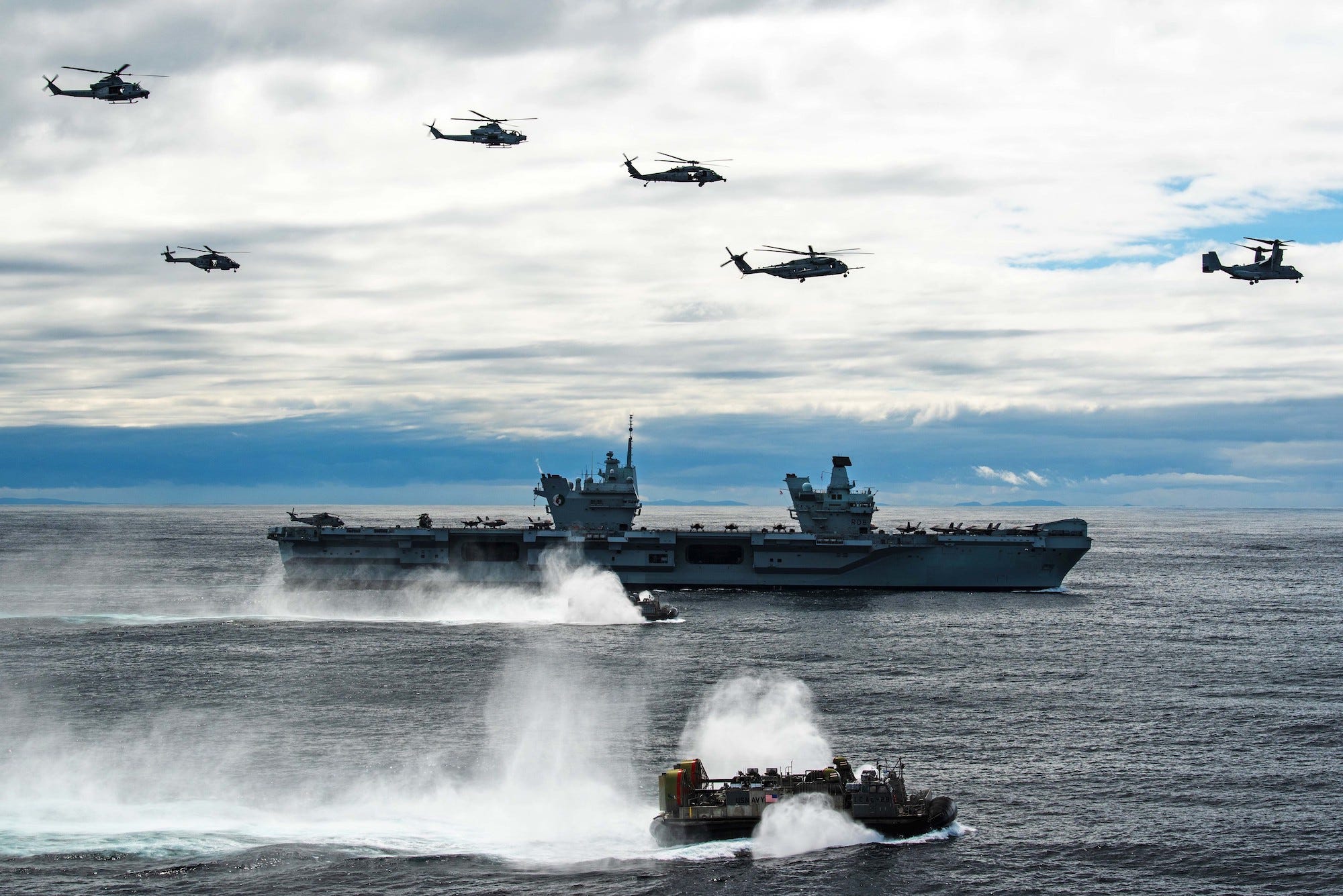
US Navy/Lt. Mark Nash
Part one of Steadfast Defender involves more than 5,000 service members from 11 NATO countries. Among the 20 ships participating is British aircraft carrier HMS Queen Elizabeth, which is on its maiden operation and is embarked with US and British F-35B fighter jets.
Those two F-35B squadrons "have been working hand in glove for some considerable time," Betton said, adding that with 18 F-35Bs, Queen Elizabeth has "the largest fifth-generation air wing yet embarked on any ship."
While no merchant ships are involved in this exercise, an officer from the NATO Shipping Center is aboard USS Mount Whitney with the Navy staff overseeing the maritime live exercise.
"He's working with our team to make sure that we can orchestrate how we would've effected that protection of shipping across the Atlantic," Royal Canadian Navy Adm. Steve Waddell, vice commander of US 2nd Fleet and leader of the maritime component command, said Thursday.
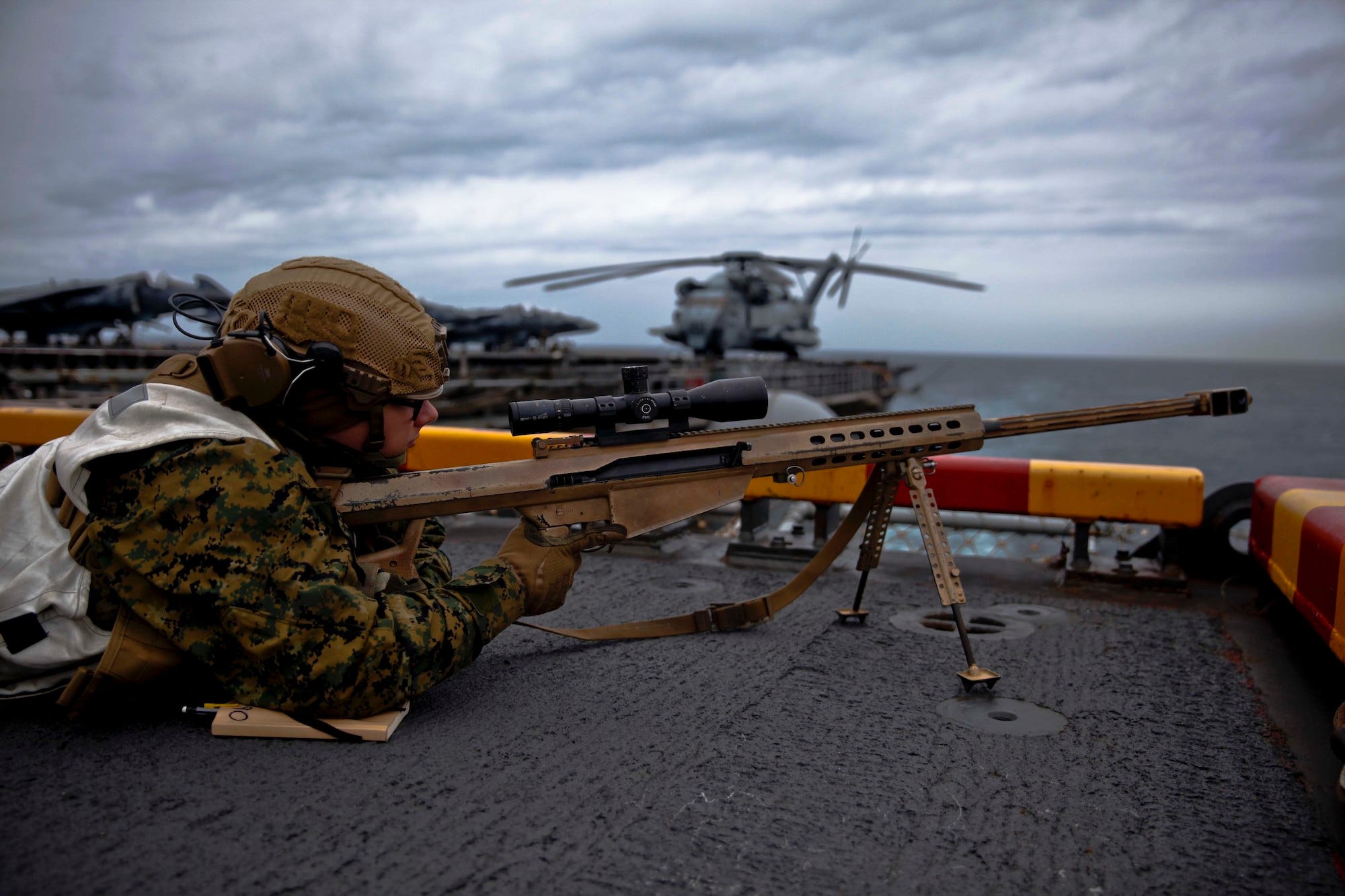
US Marine Corps/Sgt. Isaiah Campbell
The US Navy's Iwo Jima Amphibious Ready Group is also participating, "providing reach to the [maritime component command] for the sea lines of communication protection mission," JFC Norfolk said in a release.
The ready group can also support "a different variety" of scenarios during the exercise, Waddell said.
The ready group's "enablers" - such as aviation resources and Marines themselves - give "us an opportunity to think a little bit differently about how we would employ Marines in that [maritime and sea control] mission space," Waddell said.
"For example, we could build them into our program or enable us to conduct a landing ashore and perhaps put together a point-defense area that would, in fact, control one of those chokepoints" described by Lewis, Waddell added.
